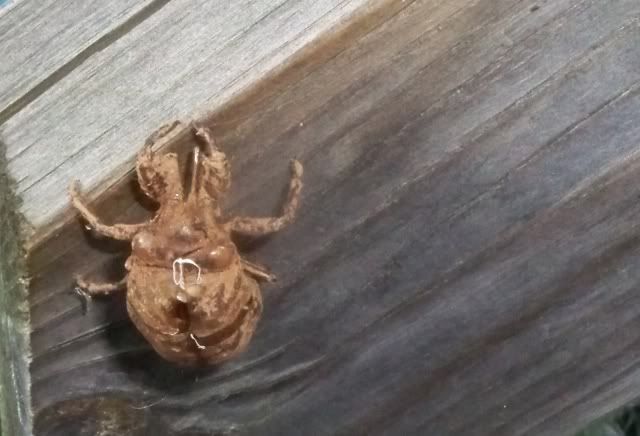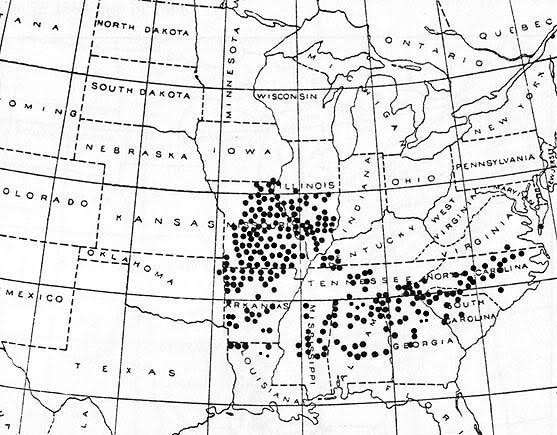Cross-posted from WNC Citizens Blog...

The above photo is of a discarded Cicada skin I noticed on the railing of my stairs this Saturday morning.
It's that time of year, or if you're a Brood XIX Cicada, that time of your 13 year life cycle when you must crawl out of the ground, molt, eat, sing, mate, lay eggs, then die. Only this one didn't hit the snooze button and wait until 2011, when the rest of his/her brood will be emerging.
I did a little research via the Internet, and have surmised that it may belong to a brood of Cicadas known as 'The Great Southern Brood' that last emerged in 1998 and will be back in 2024. This is the only brood that has a known emergence in Macon County within five years of 2011. It is a straggler because it has emerged a year early. (Stragglers can emerge two years either side of the main brood).

Brood XIX is the largest (by geographical extent) brood of 13-year cicadas. This brood is also notable for including the species M. neotredecim and exhibiting a striking pattern of reproductive character displacement between M. neotredecim and M. tredecim (Cooley et al. 2001; Marshall and Cooley 2000; Simon et al. 2000).
Map Source: Magicicada
After years of living in underground tunnels, where they feed on the juices of roots, thousands of periodical cicadas emerge from the earth, as if by a predetermined signal, shed their nymphal skins, and spread out through the nearby trees and bushes.
The cicada's precise but prolonged time schedule has perhaps evolved as a method of survival for the masses. When a large population of juicy insects appears on the scene, predators make the most of the situation, but simply cannot eat all the insects. Thus, a significant number of cicadas live to reproduce.The periodical cicada is able to outlast and escape most of its enemies.
Any cicadas that merge near my house may have a rough go of it this year...due to the family of squirrels I have living in my Chinese Necklace Poplar tree. (A type of tree I do not recommend growing within 45 feet of your house or underground pipes...but that is a story for another day).
I haven't heard of other reports of emerging cicadas locally.






























2 comments :
Sorry, johnbravo, no spam links.
Post a Comment